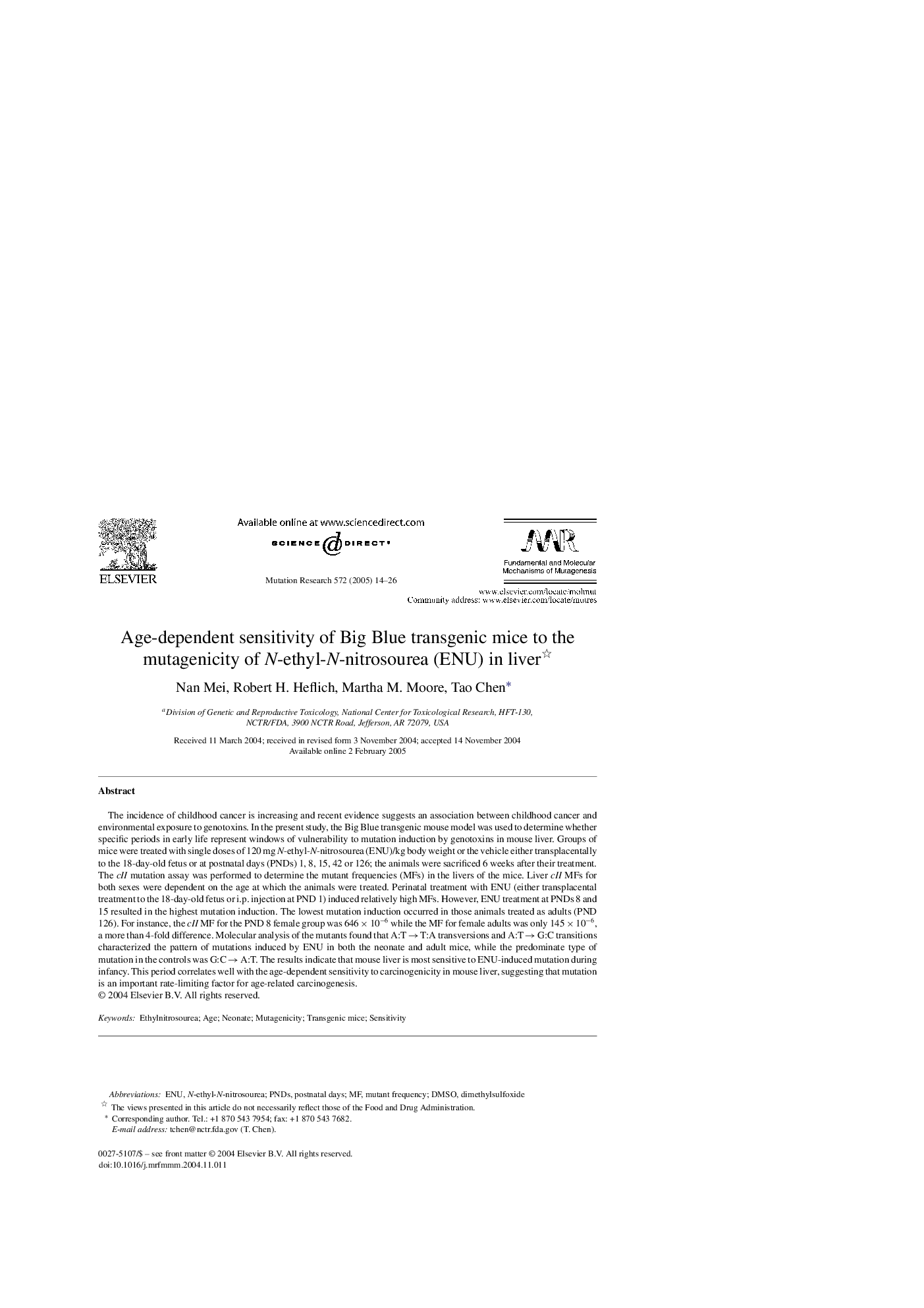| Article ID | Journal | Published Year | Pages | File Type |
|---|---|---|---|---|
| 9909130 | Mutation Research/Fundamental and Molecular Mechanisms of Mutagenesis | 2005 | 13 Pages |
Abstract
The incidence of childhood cancer is increasing and recent evidence suggests an association between childhood cancer and environmental exposure to genotoxins. In the present study, the Big Blue transgenic mouse model was used to determine whether specific periods in early life represent windows of vulnerability to mutation induction by genotoxins in mouse liver. Groups of mice were treated with single doses of 120 mg N-ethyl-N-nitrosourea (ENU)/kg body weight or the vehicle either transplacentally to the 18-day-old fetus or at postnatal days (PNDs) 1, 8, 15, 42 or 126; the animals were sacrificed 6 weeks after their treatment. The cII mutation assay was performed to determine the mutant frequencies (MFs) in the livers of the mice. Liver cII MFs for both sexes were dependent on the age at which the animals were treated. Perinatal treatment with ENU (either transplacental treatment to the 18-day-old fetus or i.p. injection at PND 1) induced relatively high MFs. However, ENU treatment at PNDs 8 and 15 resulted in the highest mutation induction. The lowest mutation induction occurred in those animals treated as adults (PND 126). For instance, the cII MF for the PND 8 female group was 646 Ã 10â6 while the MF for female adults was only 145 Ã 10â6, a more than 4-fold difference. Molecular analysis of the mutants found that A:T â T:A transversions and A:T â G:C transitions characterized the pattern of mutations induced by ENU in both the neonate and adult mice, while the predominate type of mutation in the controls was G:C â A:T. The results indicate that mouse liver is most sensitive to ENU-induced mutation during infancy. This period correlates well with the age-dependent sensitivity to carcinogenicity in mouse liver, suggesting that mutation is an important rate-limiting factor for age-related carcinogenesis.
Keywords
Related Topics
Life Sciences
Biochemistry, Genetics and Molecular Biology
Cancer Research
Authors
Nan Mei, Robert H. Heflich, Martha M. Moore, Tao Chen,
